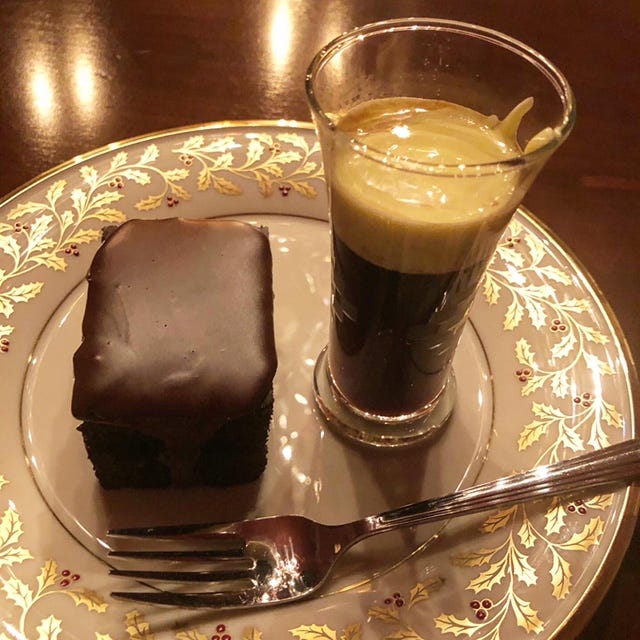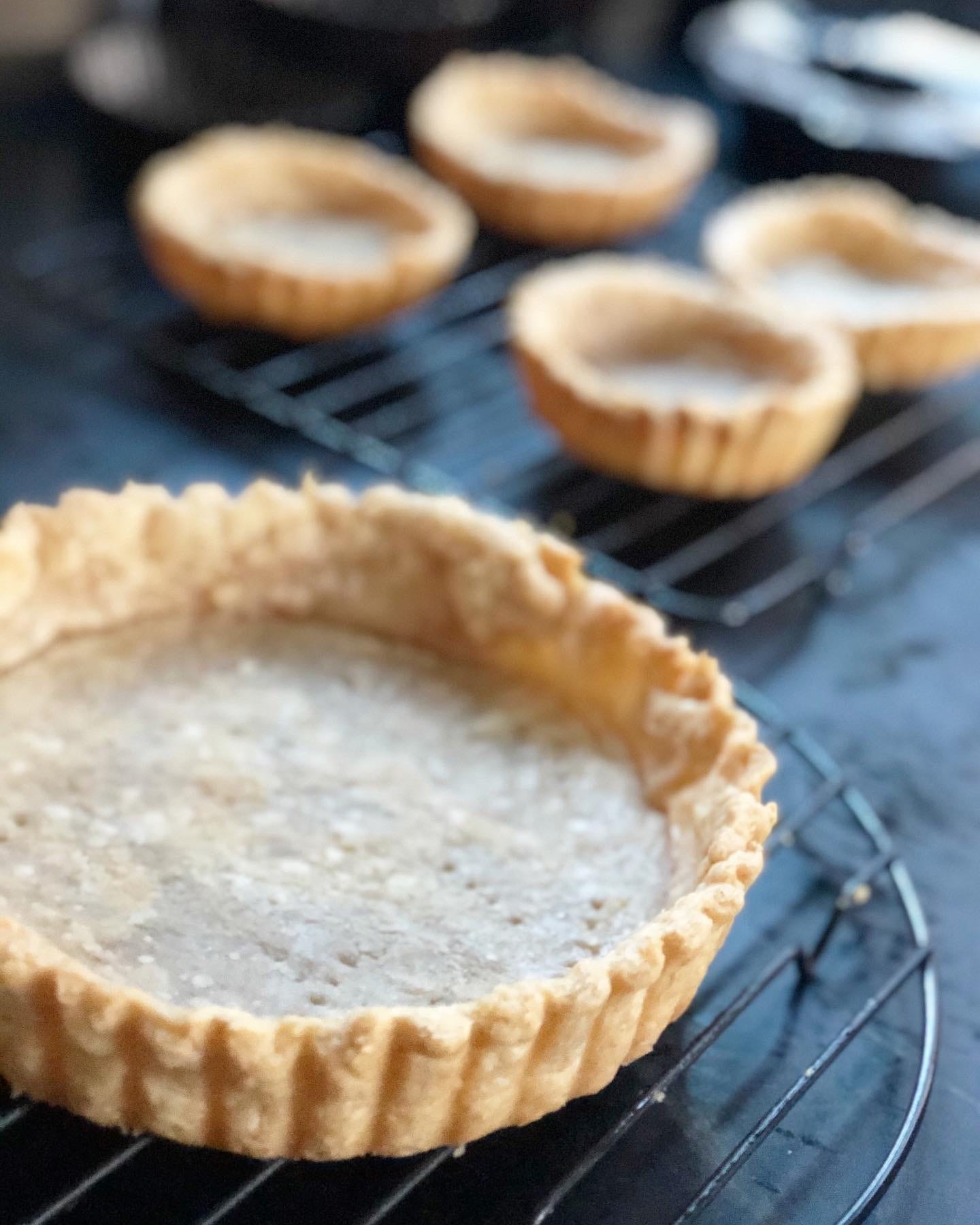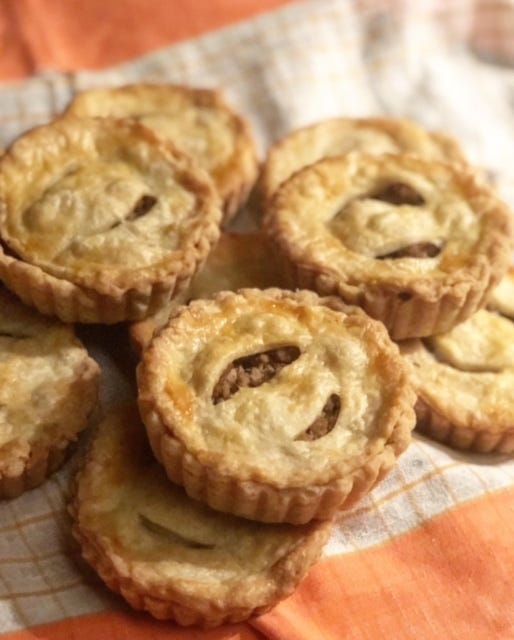I’ve been thinking a lot about traditions lately.
I suspect we all have. Whether it’s a tradition lost, or one newly made, in this year like no other, we’ve had to create different ways to celebrate the season in the most unexpectedly of ways.
Like the best of our memories, tradition is so often tied to food, isn’t it? A taste, a smell, a combination of flavours – with a single bite, we are back to our six-year-old selves, full of magic and wonder. So it makes sense that I’ve been spending a lot of time in the kitchen these past few weeks. The joy and alchemy of cooking has brought me closer to those beloved memories and traditions, even if it’s a party of two that’s eating the fruits of my labour.
Old Memories, New Traditions
The aromatic spray of scent from a clementine recall the stockings of my childhood, where a tangerine tucked at the very bottom was the best kind of exotic treat on a frosty Christmas morning. Espresso topped with zabaione bring to mind another moment in time. Waking to the smell of strong coffee brewed in a Corning Ware percolator. Low murmurs, the crinkle of waxed paper, the snap of a lunchbox closing. If I sneaked down quietly enough, I could slide onto a chair in the kitchen and watch sleepily as my mother made my father’s lunch for the day shift at the factory. And if I was especially lucky, she’d whip some egg yolks with sugar until they were creamy, and top a thimbleful of coffee with that delicious treat.
It turns out that there’s an important health reason that holiday celebrations and cherished routines matter. They form a foundational gravity that gives us grounding. And ignoring those traditions can pull us off our moorings. But what if we try to embrace them instead? As Kimberly Key writes in Psychology Today:
Try writing out what makes you grateful for each [family tradition]. Is it the smell? The taste of a food? The laughter? Is there a way you can share these essentials with others who may not know them? What new traditions would you like to initiate? Something magical happens when you approach your traditions with these types of reflective questions. Creativity flourishes. Discovery sets in. New thing reveals themselves as crystallization stirs new revelations.
As the new year unfolds, I’m not making resolutions. Rather I’m going to continue to write about the things that matter to me, the memories that made me, and the foods that shape my joy. They may morph into new traditions, or stay resolutely grounded in the past. But either way, I’m looking forward to the fresh discovery the creative process will bring.
A Really Good Tourtiere
(makes one 23 cm/9 inch pie)
You may think the season for tourtiere is past, and perhaps tradition dictates this is so. But I’ve always thought it such a shame that this singularly delicious Quebecois meat pie seems to have its moment at Christmas and New Year’s, and then skulk away.
So why not make a tourtiere now? Now that the fuss of the holidays is over, the deep winter settling in, a return to simpler foods desired, isn’t this the kind of thing you want to savour?
This recipe originally appeared in The Horizon Cookbook, published in 1968. The Tourtiere appears between Mexican Enchiladas and Bollito Misto, reflecting the wide-ranging and eclectic nature of this collection. Over the years, we’ve modified it to suit our taste. Here’s that version.
1 recipe of your favourite double crust pie dough (this is my go-to)
340 grams/¾ lb ground veal
680 grams/1.5 lb. ground pork
1 large onion, cut half and then quartered (see step 3 below)
1 teaspoon salt; more to taste
½ tsp pepper
½ tsp ground mace
½ tsp dried sage
3 tablespoons bacon fat (really, I must insist on this for the best flavour)
125 ml/½ cup beef broth
1 egg diluted with 1 tablespoon water and mixed until combined
Your favourite chutney (I like this one)
Make the pastry, chill well, at least one hour. Divide the dough in half, roll out one half and blind bake the bottom crust in a 23 cm/9 inch pie plate . Keep the top crust dough chilled until you are ready to bake the tourtiere. See here for the how-to.
Preheat oven to 220°C/425°F
Regrind the meats together with the onion and the salt, pepper, mace and sage. This may seem like a fussy step but does make for a uniformly ground filling. If you don’t have a meat grinder, make sure to mince your onion before mixing it together with the ground meat and seasonings.
Heat bacon fat in a large skillet, add the meat mixture, and cook, stirring for a few minutes until the meat starts to lose its red colour. Add half the broth, and simmer, covered for 20 to 25 minutes. Stir occasionally, adding broth as needed so that the mixture doesn’t dry out. Cool to room temperature; you don’t want the pan juices to be solidified.
Fill the prebaked bottom crust with the meat filling. Roll out the top crust, cover the meat filling, and seal, trim and flute the crust. Prick with a fork and brush with the egg wash.
Bake for 15 minutes. Lower the heat to 180°C/350°F and continue baking for 40 minutes longer, or until the pie is golden brown. Cool and serve at room temperature with the fruit chutney or for my husband’s tourtiere tradition, Heinz ketchup.








À essayer! I add savory in my tourtière. I’ve had yours and it’s delish!
It’s so true that tastes and smells from the past ground you - wonderfully explained! I’ve never made tourtiere but this recipe sounds delicious... the time has come - thank you.